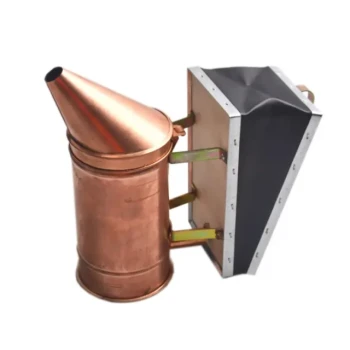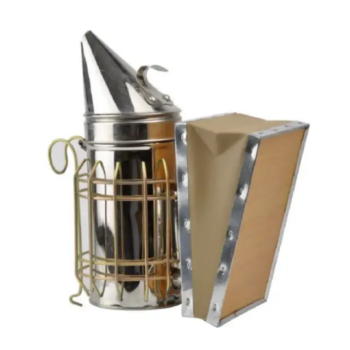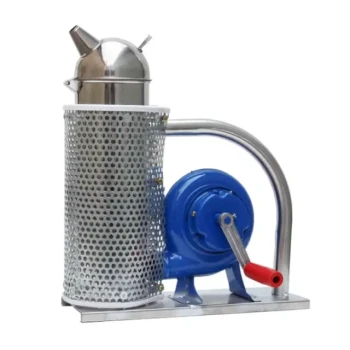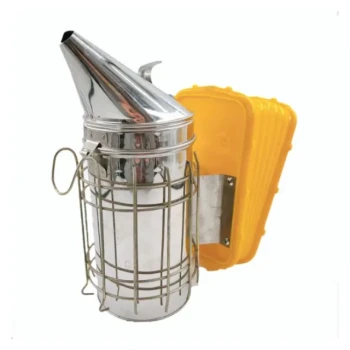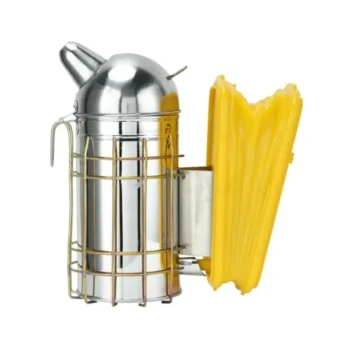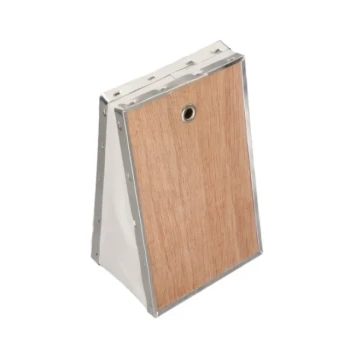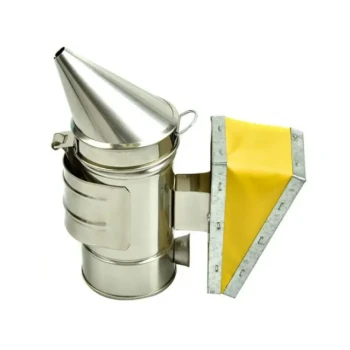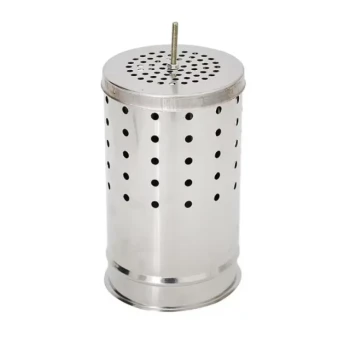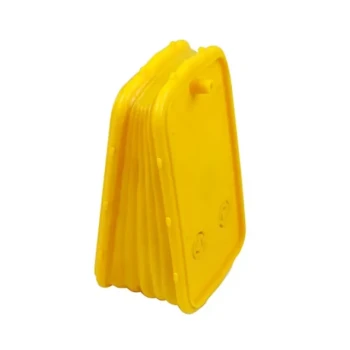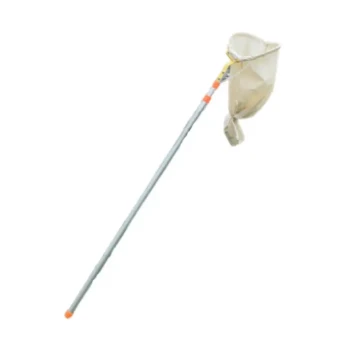To create smoke for bees, you need a bee smoker—a small device with a bellow—and a suitable fuel source. The key is to smolder materials like dry pine needles, untreated paper egg cartons, or rotten wood to produce a cool, white smoke, which is essential for calming the bees effectively.
The goal is not simply to create smoke, but to generate cool, white smoke and apply it with a deliberate technique. This method interrupts the bees' alarm signals and triggers a natural feeding instinct, making the hive manageable and safe to inspect.
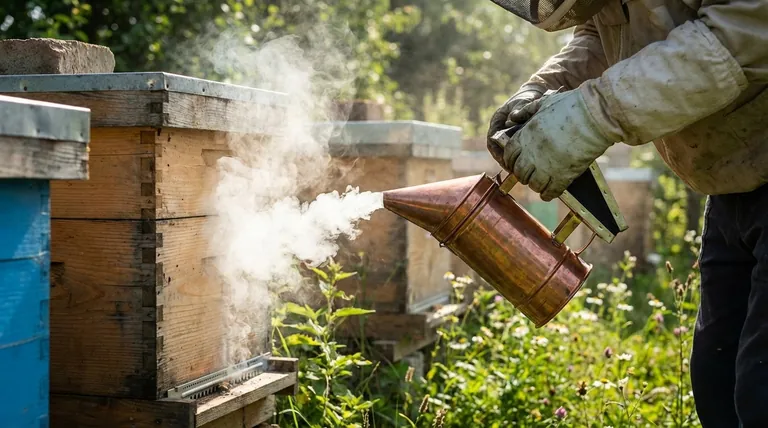
How Smoke Calms a Beehive
Smoke is a fundamental tool in beekeeping because it works on two distinct levels of bee behavior. Understanding this is the first step to using it correctly.
It Masks Alarm Pheromones
When a honeybee perceives a threat or is injured, it releases an alarm pheromone. This chemical signal instantly alerts other bees in the colony, putting them on high alert and increasing their defensiveness.
Smoke effectively masks these pheromones. By hindering the bees' powerful sense of smell, you prevent the alarm from spreading throughout the hive, keeping the overall colony in a much calmer state.
It Triggers a Survival Response
Smoke also triggers a deep-seated survival instinct. When bees detect smoke, their instinct tells them their hive may be in danger from a fire.
Their immediate response is to prepare to abandon the hive. They begin engorging themselves on honey to have enough energy stores for the journey to a new home. A bee with a full stomach is less agile and physically less inclined to sting, making it far more docile.
Creating the Ideal Smoke
The quality of your smoke is as important as the technique you use to apply it. The wrong kind of smoke can make the situation worse.
The Essential Tool: The Bee Smoker
A bee smoker is a simple but effective device. It consists of a fire chamber for the fuel and a set of bellows that pump air, keeping the fuel smoldering without bursting into open flame. This design is crucial for generating the right kind of smoke.
Choosing the Right Fuel
The best fuels are natural, untreated, and produce a thick, cool smoke. Excellent options include:
- Dry pine needles
- Untreated paper or cardboard egg cartons
- Rotten, punky wood
- Cotton fabric scraps (like old jeans)
Always ensure your fuel is free of chemicals, glue, plastic, or other contaminants that could harm the bees or your honey.
The Goal: Cool, White Smoke
The ideal smoke for beekeeping is cool and white. This indicates a slow, smoldering burn.
Hot, dark smoke signals a fire that is too aggressive. This type of smoke can agitate the bees, cause them to become aggressive, and even burn their delicate wings. If your smoker is producing dark smoke, use the bellows less frequently or add more fuel to smother the flames.
Common Pitfalls to Avoid
Using smoke incorrectly can be counterproductive. Avoid these common mistakes to ensure your hive inspections are calm and safe.
Using Hot or Agitating Smoke
As mentioned, dark or hot smoke will not calm bees. It is perceived as a direct threat and will increase defensiveness, defeating the entire purpose of using a smoker.
Applying Smoke Haphazardly
Smoke is a communication tool, not a weapon. Do not blast smoke directly into a cluster of bees. Instead, waft it gently across the area you intend to work. Think of it as nudging the bees, not forcing them.
Not Allowing Time for a Response
Smoke is not instantaneous. After applying smoke to the entrance and under the lid, wait a few minutes. This gives the bees time to sense the smoke, mask any existing alarm signals, and begin feeding on honey. Rushing this step is a common mistake for new beekeepers.
How to Apply This to Your Hive
A successful hive inspection relies on a methodical and gentle approach. Follow this sequence for the best results.
- If your primary focus is a safe and calm inspection: Prioritize creating cool, white smoke and always wait a few minutes after the initial puffs for the bees to become docile.
- If your primary focus is efficiency: Use smoke strategically to gently direct bees away from the frames you need to lift, keeping your work area clear and minimizing disruption.
Mastering the smoker is a foundational skill that transforms hive inspections from a stressful event into a calm and productive interaction.
Summary Table:
| Key Aspect | Description |
|---|---|
| Goal | Produce cool, white smoke to calm bees, not agitate them. |
| Tool | Bee smoker with a bellows. |
| Ideal Fuel | Dry pine needles, untreated paper egg cartons, rotten wood. |
| Key Technique | Apply smoke gently and wait a few minutes for bees to respond. |
| Primary Effect | Masks alarm pheromones and triggers a survival feeding response. |
Ensure every hive inspection is safe and productive with professional-grade equipment from HONESTBEE.
We supply commercial apiaries and beekeeping equipment distributors with the reliable, high-quality tools they need to succeed. From durable bee smokers to essential protective gear, our wholesale-focused operations are designed to support your business's growth and efficiency.
Contact HONESTBEE today to discuss your wholesale supply needs and discover how our products can contribute to your success.
Visual Guide
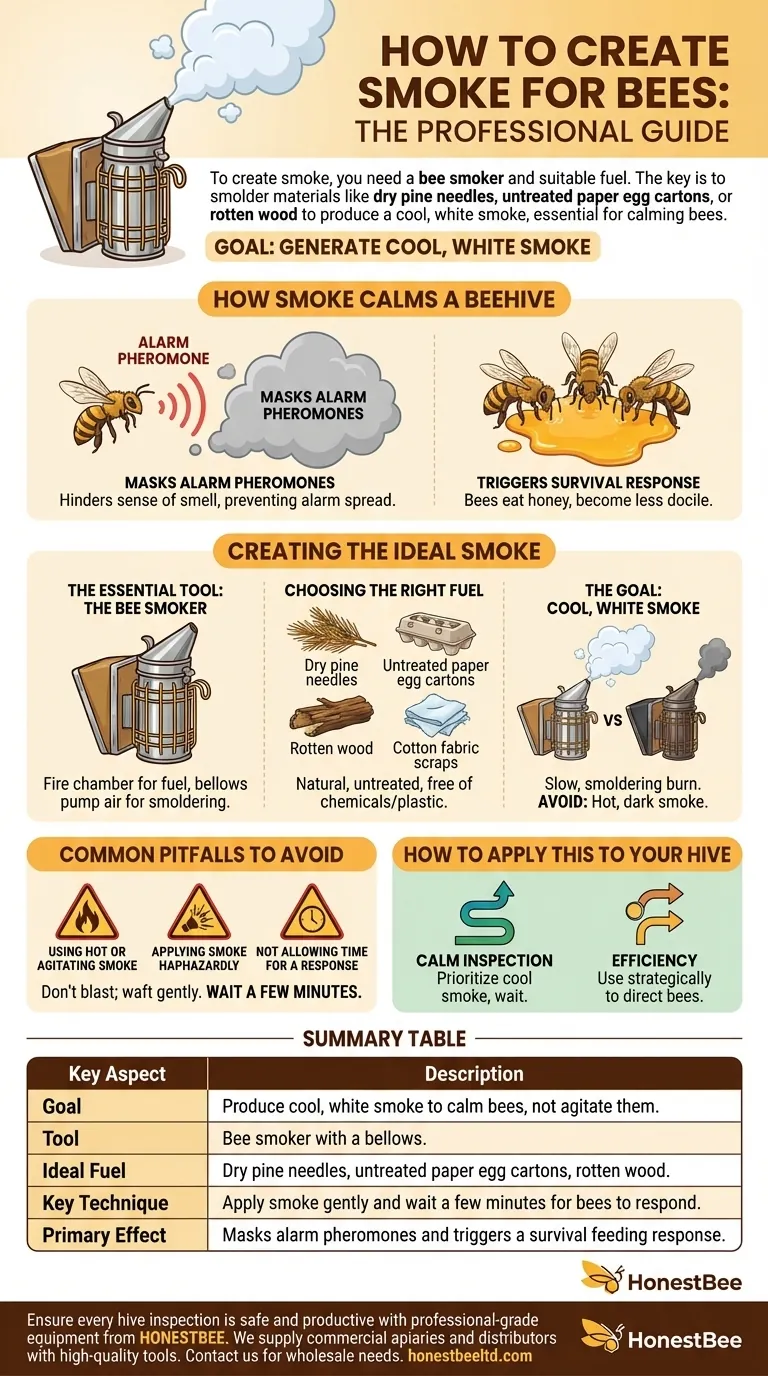
Related Products
- Premium Traditional Copper Bee Smoker with Bellows
- Stainless Steel Honey Bee Smoker Hive and Honeycomb Smoker for Beekeeping
- Economy Galvanized Beekeeping Honey Bee Smoker for Wholesale
- European Stainless Steel Bee Smoker for Honey Bee Hive
- Electric Bee Smoker European Style Bee Hive Smoker for Beekeeping
People Also Ask
- What are the benefits of using smoke properly in beekeeping? Achieve Calm, Safe Hive Inspections
- What is the purpose of a bee smoker and how should it be used? A Guide to Calm, Safe Hive Inspections
- How did early beekeepers use bee smokers? Master Ancient Bee Calming Techniques
- How does water mist work as an alternative to smoke in beehives? A Guide to Safe & Effective Use
- What is a Smoker and how is it used in beekeeping? The Essential Tool for Calm, Safe Hive Inspections
